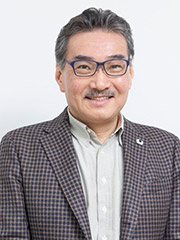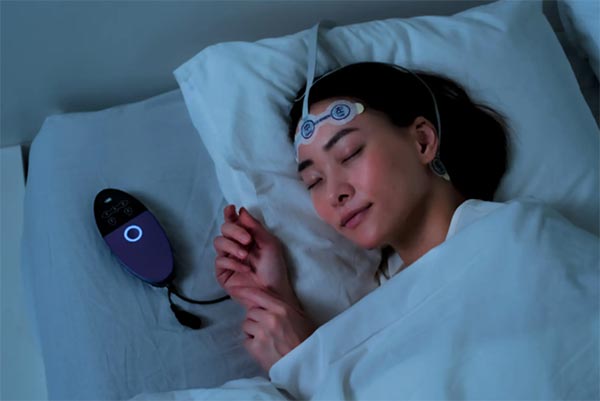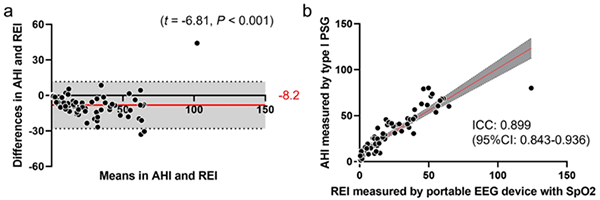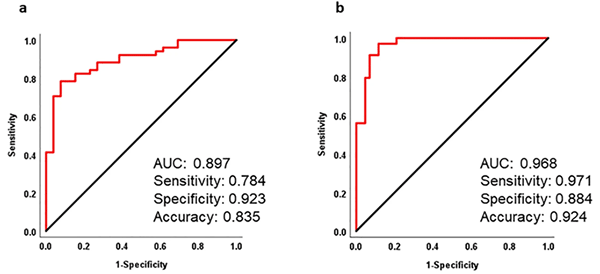Research Results
Significant Reduction of the Burden on Patients with Sleep Disorders
Realizing Highly Accurate Sleep Electroencephalography Measurement at HomeFY2025

- YANAGISAWA Masashi (Director and Professor, International Institute for Integrative Sleep Medicine, University of Tsukuba)
- CREST
- Research Director (2016-2022), Opt Bio Area: "Integrated Analysis of the Function of Sleep and its Regulatory Mechanisms Using Optical Technologies"
Enabling accurate assessment of obstructive sleep apnea syndrome at home
A research group led by Professor Masashi Yanagisawa, International Institute for Integrative Sleep Medicine, University of Tsukuba, previously launched S'UIMIN Inc., a start-up company by University of Tsukuba, and developed InSomnograf, which can be easily used to measure electroencephalography (EEG) during sleep at home (Fig. 1). Previous studies have confirmed that the InSomnograf can measure sleep in healthy subjects with the same accuracy as overnight polysomnography (PSG)*1.
Professor Yanagisawa and colleagues investigated whether InSomnograf can also measure with the same accuracy obstructive sleep apnea syndrome (OSA), which causes a sleep condition that differs considerably from that of healthy people. As a result, it was verified that the device was sufficiently adequate for early detection and sleep assessment of OSA.
This will enable remote medicine for diagnosis and follow-up of sleep disorders and may contribute to significantly reducing the burden on patients.
*1 Overnight polysomnography (PSG)
A test that records EEG, respiration, lower extremity motion, jaw motion, eye motion, electrocardiogram, oxygen saturation, chest wall motion, and abdominal wall motion during sleep. It is often performed during hospitalization at specialized facilities for diagnosis of sleep-related disorders.

Fig.1 InSomnograf ⒸS’UIMIN Inc. A sleep measurement service that measures brain waves during sleep at home, analyzes them using AI, and reports back to the user with physicians' feedback and advice for improvement.
The challenge of EEG measurement during sleep with less patient burden
It is estimated that one billion or more people worldwide are affected by OSA and that nine million or more people in Japan are affected by moderate and more severe OSA alone. Although OSA can be diagnosed by overnight PSG, it requires hospitalization and is thus costly and time-consuming. In addition, because of the limited number of medical facilities that perform the test, only 80,000 overnight PSG are implemented annually. Therefore, there has been a need for new tests that can be performed in the everyday environment with less patient burden.
Confirmed Equivalence between InSomnograf and PSG
The present study was conducted on 77 subjects, including adults aged 20 years or older who demonstrated 5 points or higher in either the apnea hypopnea index (AHI) or the 3% oxygen desaturation index (3% ODI)*2 and were suspected of having sleep apnea syndrome (SAS) at the pre-study simplified testing. The subjects were asked to wear an InSomnograf and a PSG device at the same time and received overnight sleep measurement at the Sleep Center of Shunkaikai Inoue Hospital, Nagasaki, Japan. The following day, data acquired from each device was analyzed and 11 quantitative sleep indicators (e.g., total sleep time, ratio of each sleep stage, arousal index, and respiratory event index (REI) or AHI) were calculated to verify the equivalence of the two devices. The results confirmed the consistency between the two measurement methods for all indicators. For example, a comparison between REI, obtained by combining EEG measurements and percutaneous oxygen saturation (SpO2) measurements during sleep at home, and AHI from PSG showed an intraclass correlation coefficient of 0.899 (Fig. 2). Further, the arousal index results from InSomnograf detected patients with severe OSA with high level of specificity (Fig. 3).
*2 Three-percent oxygen desaturation index (3% ODI)
An indicator that measures the frequency per hour of events where the blood oxygen saturation decreases by 3% or more during sleep. This index is used to diagnose and assess the severity of respiration-related sleep disorders such as SAS. A higher frequency of decreased oxygen saturation indicates higher probability and severity of respiratory disorders.

Fig.2 Investigation of the Equivalence in REI
Results from the Bland-Altman analysis and intraclass correlation coefficient*3 on the REI results obtained from InSomnograf in combination with the oxygen saturation measurement device and the AHI results obtained from PSG. A high degree of equivalence was confirmed between the two.
(Reference:https://www.nature.com/articles/s41598-024-53827-1)
*3 Bland-Altman analysis and intraclass correlation coefficient
The Bland-Altman analysis and intraclass correlation coefficient are two different statistical methods to assess consistency and reliability between measurement methods. In the Bland-Altman analysis, the mean difference between data obtained from different measurement methods and the acceptable range of difference are calculated. If the data is within this acceptable range of difference, the two measurement methods are evaluated as being consistent in practical terms. The intraclass correlation coefficient is a method to quantitatively evaluate consistency between different raters or repeated measurements performed by the same rater.

Fig.3 Accuracy of Screening with Arousal Index
Verification results on the accuracy of screening in patients with OSA that was performed using the arousal index results obtained from InSomnograf. Patients with obstructive sleep apnea with 25 points or higher on the arousal index and 15 points or higher on the AHI (a) and patients with obstructive sleep apnea with 32 points or higher on the arousal index and 30 points or higher on the AHI (b) were detected with high level of accuracy respectively.
(Reference:https://www.nature.com/articles/s41598-024-53827-1)
Perceived sleep duration and sleep quality are "unreliable"
Furthermore, Professor Yanagisawa and colleagues analyzed 421 people who do not receive sleep disorder treatment based on sleep EEG and blood SpO2 measurements data obtained from InSomnograf (objective sleep data), answers to a questionnaire on sleep (subjective sleep assessment), and physicians' assessment of the data in terms of insomnia, sleep deprivation, and sleep apnea. The results revealed that while physician's assessments strongly relate to objective values, they completely differ from subjective sleep assessments. Of the subjects who considered that they were sleeping sufficiently, 45% were objectively suspected of being sleep deprived, and of the subjects who complained of poor sleep, 66% showed no objective problems. Additionally, the subjective assessment on sleep quality hardly reflected objectively assessed depth of sleep, presence of short arousal, and presence of SAS risks (Fig.4). These findings suggested the importance of objective sleep measurement and comprehensive physician's assessment that is based on the measurement.

Fig.4 Discrepancy Between Subjective and Objective Sleep Assessment (Based on a published article: https://www.pnas.org/doi/10.1073/pnas.2412895121)
Toward next-generation fundamental technologies for rapid diagnosis of a wide range of diseases
Sleep disorders have become a major social issue in modern society, with one in four Japanese people reportedly suffering from sleep problems. To diagnose sleep disorders, the quantity and quality of sleep need to be visualized. Although the quantity of sleep can be measured at home with activity trackers and other devices, the quality of sleep could not be easily measured so far since it required EEG measurement while being hospitalized.
InSomnograf developed by Professor Yanagisawa and colleagues can measure EEG during sleep in patients with OSA with almost the same accuracy as PSG, the conventional standard method for sleep testing. Appropriate combination with measurement devices for respiratory flow, blood SpO2, and pulse rate can further improve accuracy and enable diagnosis and follow-up of OSA in remote medicine form at home. InSomnograf is already being used in the field of preventive medicine and research, and, going forward, it may be used in a wider range of settings including diagnosis and treatment of sleep disorders.
- Life Science
- Research Results
- Japanese
